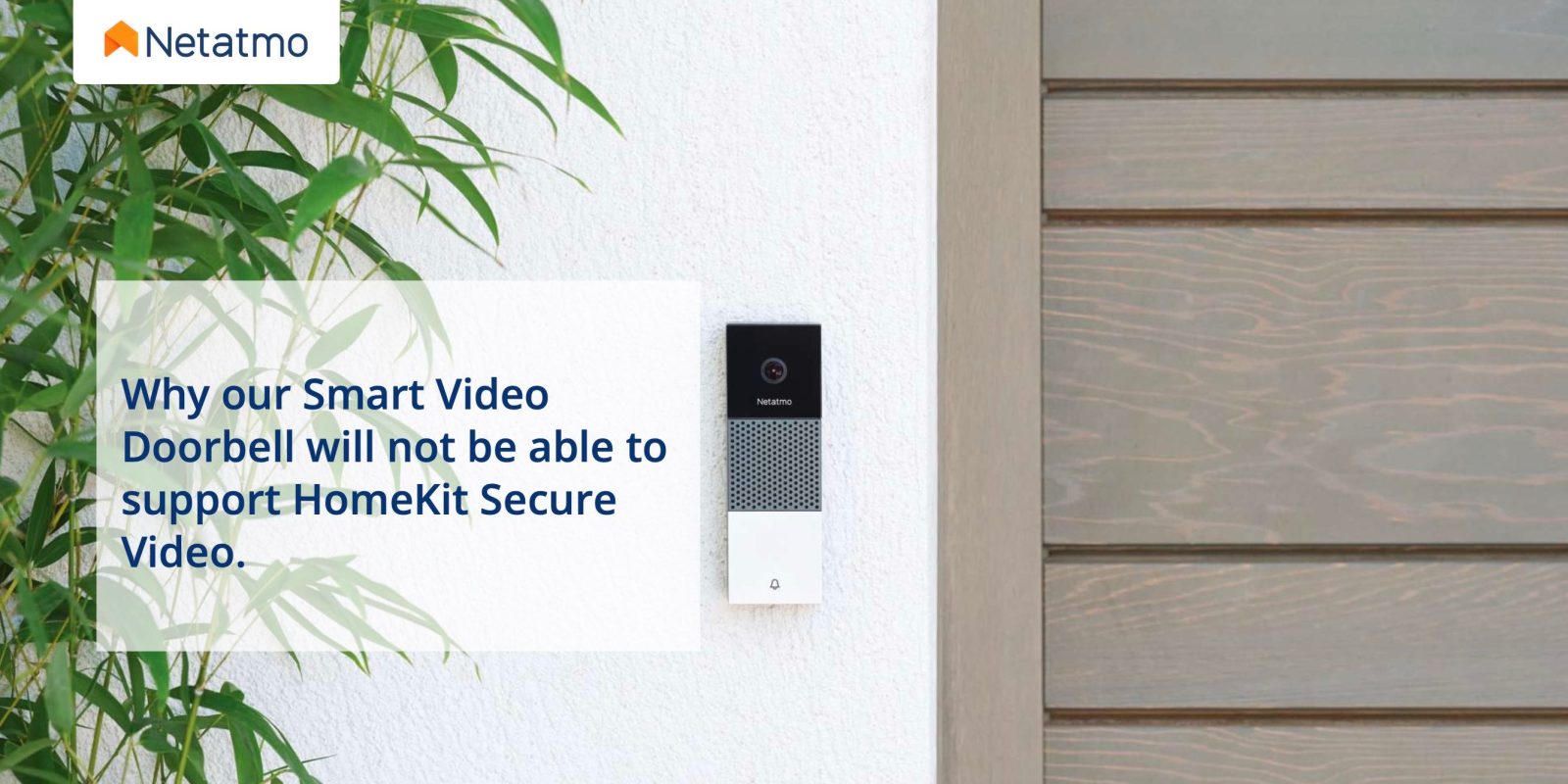
HomeKit Secure Video (HKSV) is Apple’s answer for bringing privacy to indoor and outdoor cameras by processing footage locally for person and animal detection and features end-to-end encryption. However, the capability has a number of technical requirements that can make it a challenge to implement. After planning to bring HKSV to its existing Smart Video Doorbell via a software update, Netatmo has made the difficult decision to skip the feature, here’s why.
After bringing HomeKit Secure Video to its Smart Indoor and Outdoor Cameras over the last couple of years, Netatmo planned on bringing the feature in a software update to its Smart Video Doorbell.
However, the technical challenges around power consumption and device heat have turned out to be too great. Netatmo shared all the details why it found it “impossible to support the HomeKit Secure Video feature” for its Smart Doorbell.
Integrating HomeKit Secure Video with our Smart Video Doorbell represents a significant technical challenge
One of Apple’s main requirements to make our Doorbell compatible with HomeKit Secure Video is the continuous encoding of video at 30 fps. Adopting this technology therefore means increasing the video capture rate and encoding by 15x (from 2 fps to 30 fps).
The benefit of this 30-fps encoding is the advanced recording feature, which allows video recording to start seconds before the person is seen by the sensor – a feature that’s highly valued by HomeKit Secure Video users.
Our preliminary lab tests showed that our Doorbell could support all the HomeKit Secure Video features in a temperature and light-controlled environment without any problems. However, after our field-testing campaign with our internal Ambassadors, we observed that this new encoding had a significant impact on power consumption and consequently on the internal temperature of the Doorbell, negatively affecting the user experience (overheating protection measures, slowdowns, unwanted restarts).
Our development teams then looked for ways to optimise the software to reduce the energy impact of this feature. And with the help of our internal and external Ambassadors, we were able to develop a dynamic solution to enable or disable advanced recording depending on the internal temperature of the product.
However, these optimisations do not enable advanced recording while simultaneously supporting high Wi-Fi activity and on-the-fly video encoding, which are necessary for HomeKit Secure Video compatibility.
Unfortunately, it is impossible to support the HomeKit Secure Video feature while maintaining a satisfactory user experience for our Smart Video Doorbell
Despite our teams’ best efforts, we have made the difficult decision not to support HomeKit Secure Video technology on the Smart Video Doorbell.
But these many months of development have allowed Netatmo to gain significant experience in relation to the hardware constraints of low-power products. Plus, the various optimisations made to the product now allow us to offer an important new feature to all Smart Video Doorbell users: Advanced Recording.
This unique feature will allow videos to be recorded – temperature-permitting – seconds before a person arrives on the scene while drastically improving the algorithms that lie at the heart of the product. And all without sacrificing the security and privacy features that are a huge strength for our brand.
Advanced Recording will be deployed by the end of 2022 on all Netatmo Smart Video Doorbells.
In addition, almost all of the functionality offered by HomeKit Secure Video is covered by local storage on a microSD card, storage on the cloud via Dropbox or on your own FTP server.
We understand that the decision not to support HomeKit Secure Video may disappoint some of our community. But we will always prioritise the user experience of our customers and are committed to providing some of the most reliable, durable and secure products on the market – even if this sometimes means making difficult technological decisions.
9to5Mac’s take
This is a bummer. It sounds like the company put a lot of energy into figuring out a solution but couldn’t find one without too much of a compromise to the overall experience. And this is really tough for customers who bought the Smart Video Doorbell with the expectation of HKSV support being in the works.
Interestingly, Netatmo hasn’t been the only one to encounter the power and heat issues that come with integrating HKSV into a smart doorbell. Logitech’s Circle View smart doorbell with HKSV has seen a number of users report overheating, sometimes even in winter.
Top comment by Kapazza
And even with just standard HomeKit functionality, we’ve seen companies like Chamberlain and Rachio end support this year – the latter due to unsolvable “No Response” errors.
It seems like Apple could ramp up its support and guidance for companies integrating HomeKit and HKSV to help smooth out the experience.
We’ve reached out to Netatmo asking if there’s a possibility a new doorbell with different hardware specs could support HKSV.
Thanks, Graeme Q!
FTC: We use income earning auto affiliate links. More.





Comments